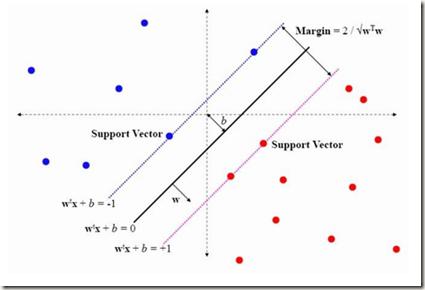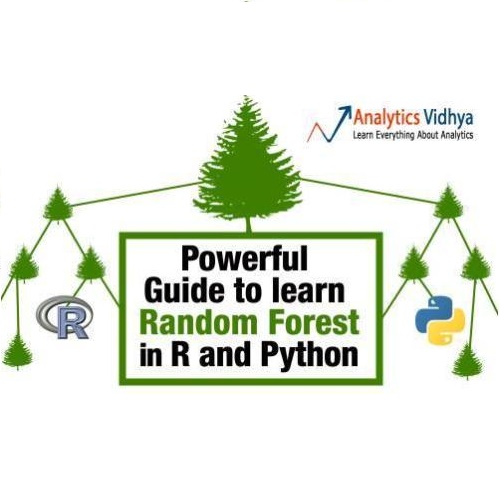Modern scientific advancements often contribute to the introduction and refinement of never-before-seen technologies. This can be quite the task for humans to maintain and monitor and as a result, our society has become reliant on machine learning to assist in this task. With new technology comes new methods and thus new ways to circumvent existing cyber security measures. This study examines the effectiveness of three distinct Internet of Things cyber security algorithms currently used in industry today for malware and intrusion detection: Random Forest (RF), Support-Vector Machine (SVM), and K-Nearest Neighbor (KNN). Each algorithm was trained and tested on the Aposemat IoT-23 dataset which was published in January 2020 with the earliest of captures from 2018 and latest from 2019. The RF, SVM, and KNN reached peak accuracies of 92.96%, 86.23%, and 91.48%, respectively, in intrusion detection and 92.27%, 83.52%, and 89.80% in malware detection. It was found all three algorithms are capable of being effectively utilized for the current landscape of IoT cyber security in 2021.
相關內容
The digital transformation faces tremendous security challenges. In particular, the growing number of cyber-attacks targeting Internet of Things (IoT) systems restates the need for a reliable detection of malicious network activity. This paper presents a comparative analysis of supervised, unsupervised and reinforcement learning techniques on nine malware captures of the IoT-23 dataset, considering both binary and multi-class classification scenarios. The developed models consisted of Support Vector Machine (SVM), Extreme Gradient Boosting (XGBoost), Light Gradient Boosting Machine (LightGBM), Isolation Forest (iForest), Local Outlier Factor (LOF) and a Deep Reinforcement Learning (DRL) model based on a Double Deep Q-Network (DDQN), adapted to the intrusion detection context. The most reliable performance was achieved by LightGBM. Nonetheless, iForest displayed good anomaly detection results and the DRL model demonstrated the possible benefits of employing this methodology to continuously improve the detection. Overall, the obtained results indicate that the analyzed techniques are well suited for IoT intrusion detection.
To fight against the evolution of malware and its development, the specific methodologies that are applied by the malware analysts are crucial. Yet, this is something often overlooked in the relevant bibliography or in the formal and informal training of the relevant professionals. There are only two generic and all-encompassing structured methodologies for Malware Analysis (MA) - SAMA and MARE. The question is whether they are adequate and there is no need for another one or whether there is no such need at all. This paper will try to answer the above and it will contribute in the following ways: it will present, compare and dissect those two malware analysis methodologies, it will present their capacity for analysing modern malware by applying them on a random modern specimen and finally, it will conclude on whether there is a procedural optimization for malware analysis over the evolution of these two methodologies.
Policymakers face a broader challenge of how to view AI capabilities today and where does society stand in terms of those capabilities. This paper surveys AI capabilities and tackles this very issue, exploring it in context of political security in digital societies. We introduce a Matrix of Machine Influence to frame and navigate the adversarial applications of AI, and further extend the ideas of Information Management to better understand contemporary AI systems deployment as part of a complex information system. Providing a comprehensive review of man-machine interactions in our networked society and political systems, we suggest that better regulation and management of information systems can more optimally offset the risks of AI and utilise the emerging capabilities which these systems have to offer to policymakers and political institutions across the world. Hopefully this long essay will actuate further debates and discussions over these ideas, and prove to be a useful contribution towards governing the future of AI.
Active learning (AL) attempts to maximize the performance gain of the model by marking the fewest samples. Deep learning (DL) is greedy for data and requires a large amount of data supply to optimize massive parameters, so that the model learns how to extract high-quality features. In recent years, due to the rapid development of internet technology, we are in an era of information torrents and we have massive amounts of data. In this way, DL has aroused strong interest of researchers and has been rapidly developed. Compared with DL, researchers have relatively low interest in AL. This is mainly because before the rise of DL, traditional machine learning requires relatively few labeled samples. Therefore, early AL is difficult to reflect the value it deserves. Although DL has made breakthroughs in various fields, most of this success is due to the publicity of the large number of existing annotation datasets. However, the acquisition of a large number of high-quality annotated datasets consumes a lot of manpower, which is not allowed in some fields that require high expertise, especially in the fields of speech recognition, information extraction, medical images, etc. Therefore, AL has gradually received due attention. A natural idea is whether AL can be used to reduce the cost of sample annotations, while retaining the powerful learning capabilities of DL. Therefore, deep active learning (DAL) has emerged. Although the related research has been quite abundant, it lacks a comprehensive survey of DAL. This article is to fill this gap, we provide a formal classification method for the existing work, and a comprehensive and systematic overview. In addition, we also analyzed and summarized the development of DAL from the perspective of application. Finally, we discussed the confusion and problems in DAL, and gave some possible development directions for DAL.
As the globally increasing population drives rapid urbanisation in various parts of the world, there is a great need to deliberate on the future of the cities worth living. In particular, as modern smart cities embrace more and more data-driven artificial intelligence services, it is worth remembering that technology can facilitate prosperity, wellbeing, urban livability, or social justice, but only when it has the right analog complements (such as well-thought out policies, mature institutions, responsible governance); and the ultimate objective of these smart cities is to facilitate and enhance human welfare and social flourishing. Researchers have shown that various technological business models and features can in fact contribute to social problems such as extremism, polarization, misinformation, and Internet addiction. In the light of these observations, addressing the philosophical and ethical questions involved in ensuring the security, safety, and interpretability of such AI algorithms that will form the technological bedrock of future cities assumes paramount importance. Globally there are calls for technology to be made more humane and human-centered. In this paper, we analyze and explore key challenges including security, robustness, interpretability, and ethical (data and algorithmic) challenges to a successful deployment of AI in human-centric applications, with a particular emphasis on the convergence of these concepts/challenges. We provide a detailed review of existing literature on these key challenges and analyze how one of these challenges may lead to others or help in solving other challenges. The paper also advises on the current limitations, pitfalls, and future directions of research in these domains, and how it can fill the current gaps and lead to better solutions. We believe such rigorous analysis will provide a baseline for future research in the domain.
Artificial Intelligence (AI) has recently shown its capabilities for almost every field of life. Machine Learning, which is a subset of AI, is a `HOT' topic for researchers. Machine Learning outperforms other classical forecasting techniques in almost all-natural applications. It is a crucial part of modern research. As per this statement, Modern Machine Learning algorithms are hungry for big data. Due to the small datasets, the researchers may not prefer to use Machine Learning algorithms. To tackle this issue, the main purpose of this survey is to illustrate, demonstrate related studies for significance of a semi-parametric Machine Learning framework called Grey Machine Learning (GML). This kind of framework is capable of handling large datasets as well as small datasets for time series forecasting likely outcomes. This survey presents a comprehensive overview of the existing semi-parametric machine learning techniques for time series forecasting. In this paper, a primer survey on the GML framework is provided for researchers. To allow an in-depth understanding for the readers, a brief description of Machine Learning, as well as various forms of conventional grey forecasting models are discussed. Moreover, a brief description on the importance of GML framework is presented.
Causal analysis and classification of injury severity applying non-parametric methods for traffic crashes has received limited attention. This study presents a methodological framework for causal inference, using Granger causality analysis, and injury severity classification of traffic crashes, occurring on interstates, with different machine learning techniques including decision trees (DT), random forest (RF), extreme gradient boosting (XGBoost), and deep neural network (DNN). The data used in this study were obtained for traffic crashes on all interstates across the state of Texas from a period of six years between 2014 and 2019. The output of the proposed severity classification approach includes three classes for fatal and severe injury (KA) crashes, non-severe and possible injury (BC) crashes, and property damage only (PDO) crashes. While Granger Causality helped identify the most influential factors affecting crash severity, the learning-based models predicted the severity classes with varying performance. The results of Granger causality analysis identified the speed limit, surface and weather conditions, traffic volume, presence of workzones, workers in workzones, and high occupancy vehicle (HOV) lanes, among others, as the most important factors affecting crash severity. The prediction performance of the classifiers yielded varying results across the different classes. Specifically, while decision tree and random forest classifiers provided the greatest performance for PDO and BC severities, respectively, for the KA class, the rarest class in the data, deep neural net classifier performed superior than all other algorithms, most likely due to its capability of approximating nonlinear models. This study contributes to the limited body of knowledge pertaining to causal analysis and classification prediction of traffic crash injury severity using non-parametric approaches.
Every year at NeurIPS, machine learning researchers gather and discuss exciting applications of machine learning in areas such as public health, disaster response, climate change, education, and more. However, many of these same researchers are expressing growing concern about applications of machine learning for surveillance (Nanayakkara et al., 2021). This paper presents a brief overview of strategies for resisting these surveillance technologies and calls for greater collaboration between machine learning and human-computer interaction researchers to address the threats that these technologies pose.
The notion of uncertainty is of major importance in machine learning and constitutes a key element of machine learning methodology. In line with the statistical tradition, uncertainty has long been perceived as almost synonymous with standard probability and probabilistic predictions. Yet, due to the steadily increasing relevance of machine learning for practical applications and related issues such as safety requirements, new problems and challenges have recently been identified by machine learning scholars, and these problems may call for new methodological developments. In particular, this includes the importance of distinguishing between (at least) two different types of uncertainty, often refereed to as aleatoric and epistemic. In this paper, we provide an introduction to the topic of uncertainty in machine learning as well as an overview of hitherto attempts at handling uncertainty in general and formalizing this distinction in particular.
This paper investigates to identify the requirement and the development of machine learning-based mobile big data analysis through discussing the insights of challenges in the mobile big data (MBD). Furthermore, it reviews the state-of-the-art applications of data analysis in the area of MBD. Firstly, we introduce the development of MBD. Secondly, the frequently adopted methods of data analysis are reviewed. Three typical applications of MBD analysis, namely wireless channel modeling, human online and offline behavior analysis, and speech recognition in the internet of vehicles, are introduced respectively. Finally, we summarize the main challenges and future development directions of mobile big data analysis.





